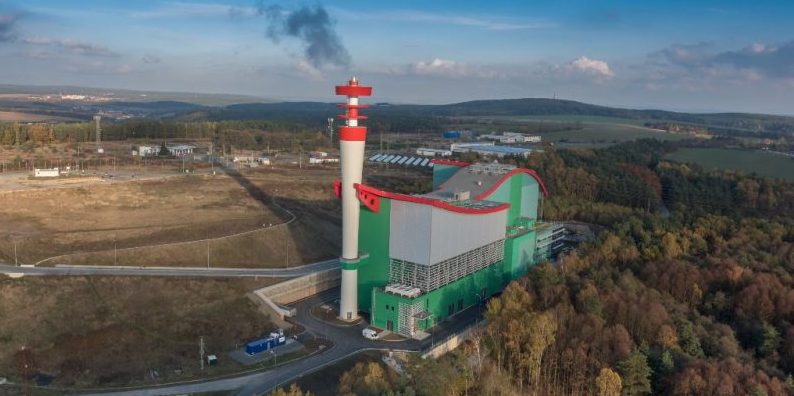A new study commissioned by Friends of the Earth-CEPA and Bankwatch estimates that a planned waste incinerator in Novaky, Slovakia will not solve energy, climate or waste issues. According to the analysis, it will be almost impossible for the plant to meet supply quotas and new recycling targets. Considering the high level of CO2 emissions from waste incineration, this solution will furthermore continue to pollute the environment while also preventing Slovakia from investing in renewables.
Juraj Melichár , National campaigner, Slovakia | 26 March 2020

Zariadenie na energetické zhodnotenie odpadu v českom Chotíkove pri Plzni. [ZEVO Plzeň]
According to the study’s findings, the proposed municipal waste incinerator will not be able to secure a sufficient supply of municipal waste (80 000-100 000 tonnes), primarily due to the relatively small population in the surrounding region.
This will be an even greater challenge given that new recycling targets will go into force in Slovakia by 2035: according to European legislation, the 65% of waste should be recycled and only approximately 10% of waste should be sent to landfills.
In fact, if these recycling targets are met, neither of the potential sites for the plant will generate a sufficient amount of municipal waste for energy recovery. In the case of option A (using waste supplied by Prievidza, Nováky and Zemianske Kostoľany), approximately 9 918 to 11 108 tonnes of municipal waste would remain for incineration after 2035. In the case of option B (using waste supplied from the entire Prievidza district), 20 635-23 111 tonnes of municipal solid waste would remain for incineration after 2035. From these amounts, some of the municipal waste will be non-combustible.
Unnecessary capacity
According to the data presented in the study, the Slovak Republic already has sufficient technical capacity for energy recovery from municipal waste, and there is no need to build more. In current conditions, with the full utilization of all existing available municipal waste incineration capacities in the Slovak Republic, 12% of municipal solid waste could be used for energy recovery and 27% of this waste could be used in cement kilns. This is more incineration capacity than will be needed in the future, given the new recycling targets.
In order to utilise the additional capacity the proposed plant would add to this, it would need to use waste that should instead be designated for reuse and recycling. This waste would come not only from the Prievidza region, but also from a large area with long transport distances.
The plant would either fail and create significant economic losses (which might subsequently be passed on to the local population), or it would repress the desired development of recycling and reuse. JASPERS also raised this problem in their analysis of potential energy solutions for the region.
Dangerous technology
Municipal waste incinerators that produce heat and electricity release fossil-based greenhouse gas emissions that are only slightly lower than those released by natural gas. Depending on the share of fossil sources present in the waste, they may even have the same or slightly higher emissions than natural gas used for these purposes. Thus, it is not clear what the climate benefits are in building installations with CO2 emissions comparable to those produced by natural gas.
The management of hazardous waste after incineration also needs to be dealt with more stringently than it is in current municipal solid waste incinerators. In particular, the management of toxic fly ash containing persistent organic pollutants is one of the main risks in terms of pollution of the environment by toxic substances and toxic substances entering the food chain.
A solution for Upper Nitra
Given these challenges, the planned incinerator should not be built. Other paths forward would provide long-term solutions for the region that bring climate benefits.
First, waste reduction, reuse and recycling should increase. Given the changing EU and Slovak legislation, which increasingly support recycling and investment in the circular economy, it is reasonable to anticipate an increase in recycling facilities. Recycling represents a lower environmental burden compared to waste-to-energy, and it saves more energy than is obtained by energy recovery of waste.
Second, investment in technology for the management of residual, mixed municipal waste is necessary. For this purpose, the least burdensome technology for the climate is, according to studies, anaerobic mechanical-biological treatment, with the sorting of metals and plastics for recycling and the landfilling of stabilized waste.
Never miss an update
We expose the risks of international public finance and bring critical updates from the ground – straight to your inbox.
Institution: EU funds
Theme: Waste Incineration
Location: Slovakia
Project: District heating
Tags: EU funds | recycling | waste incineration
